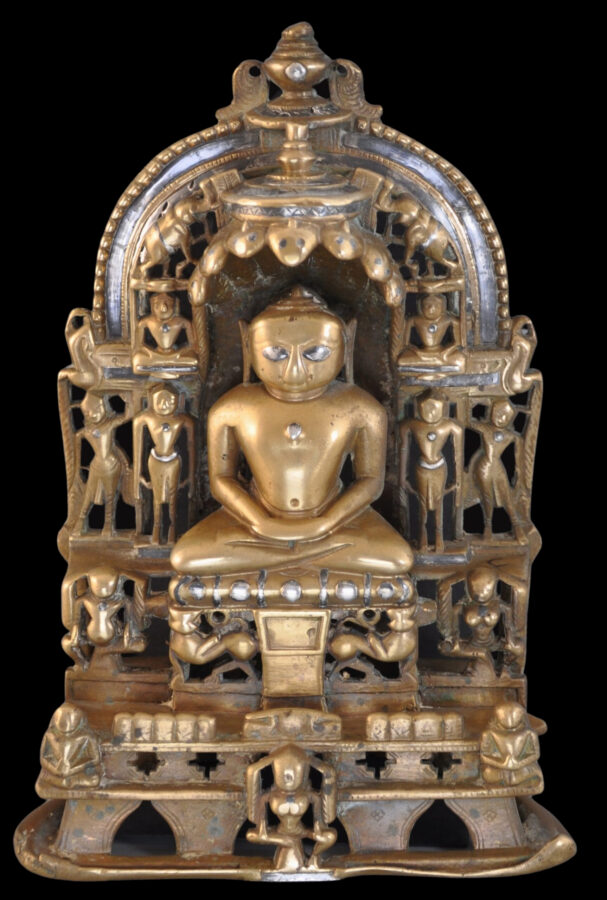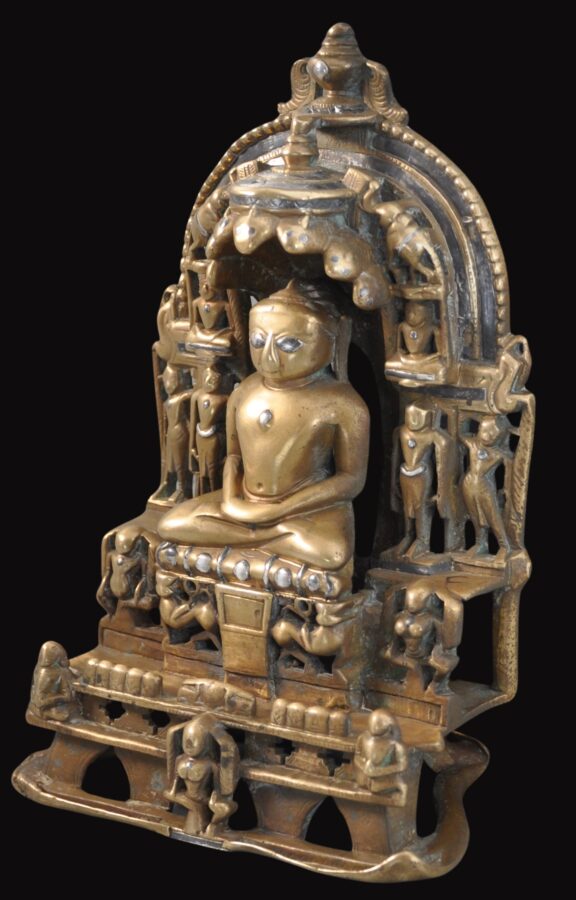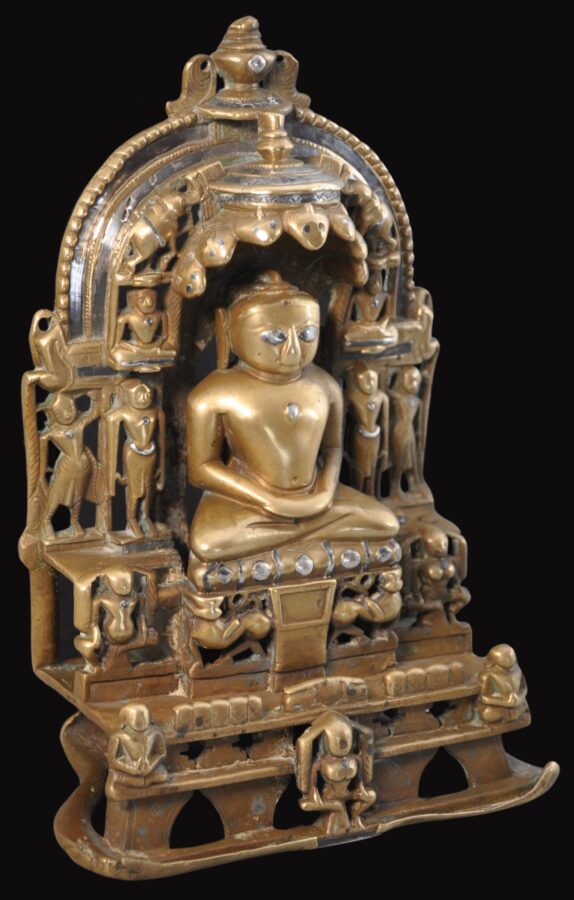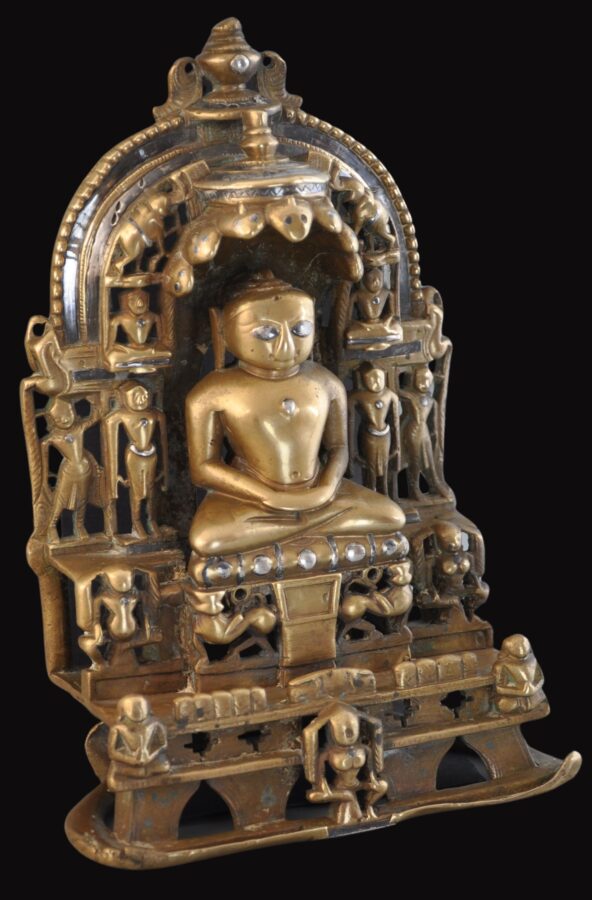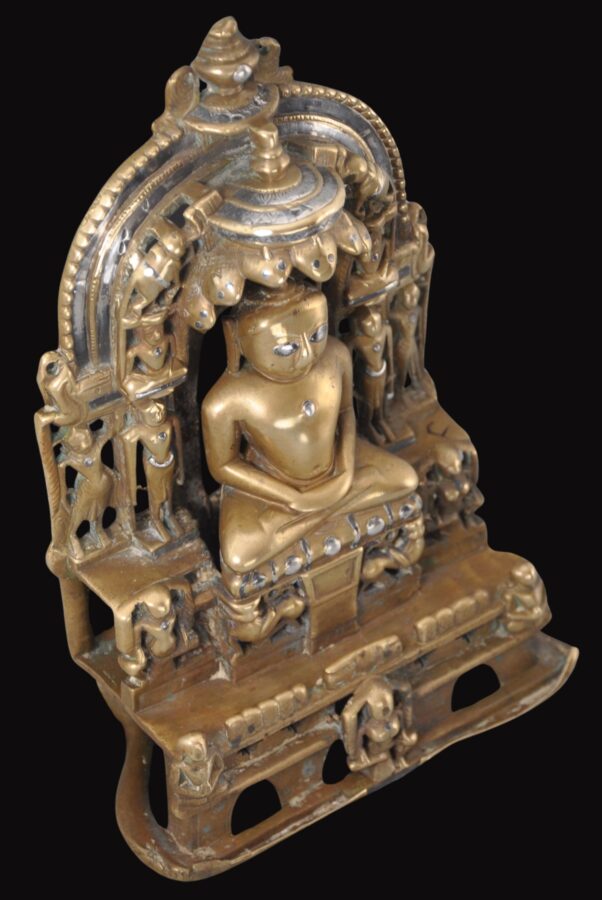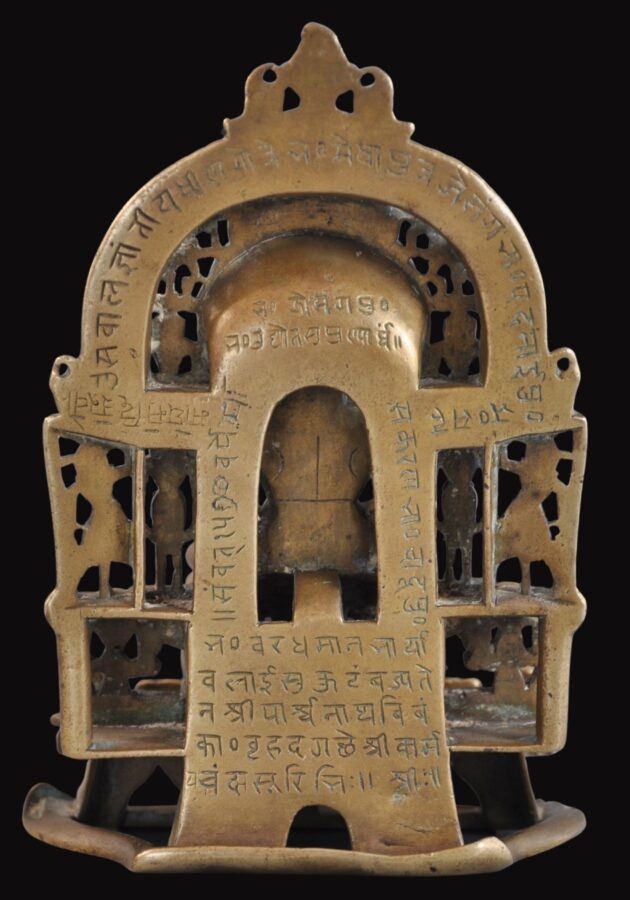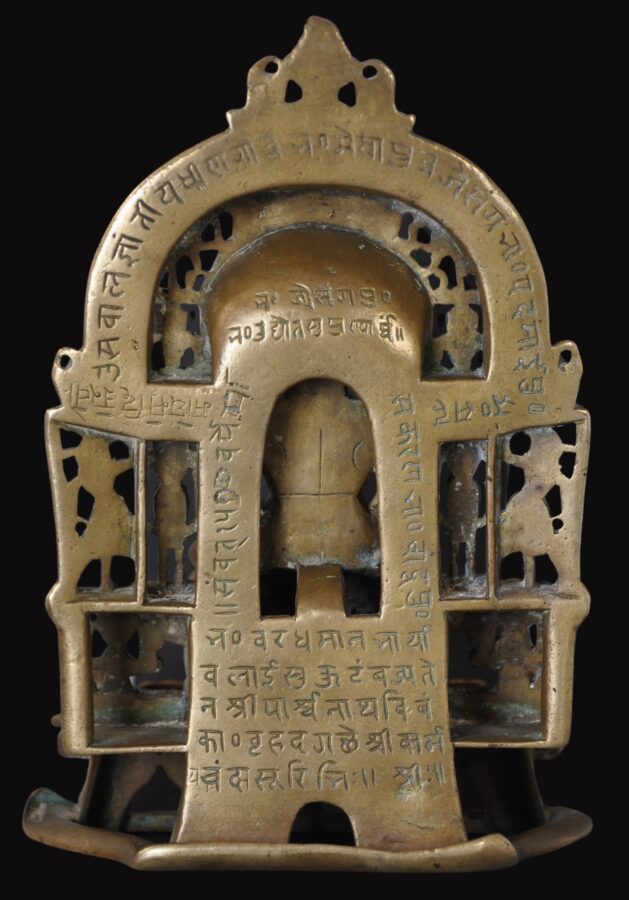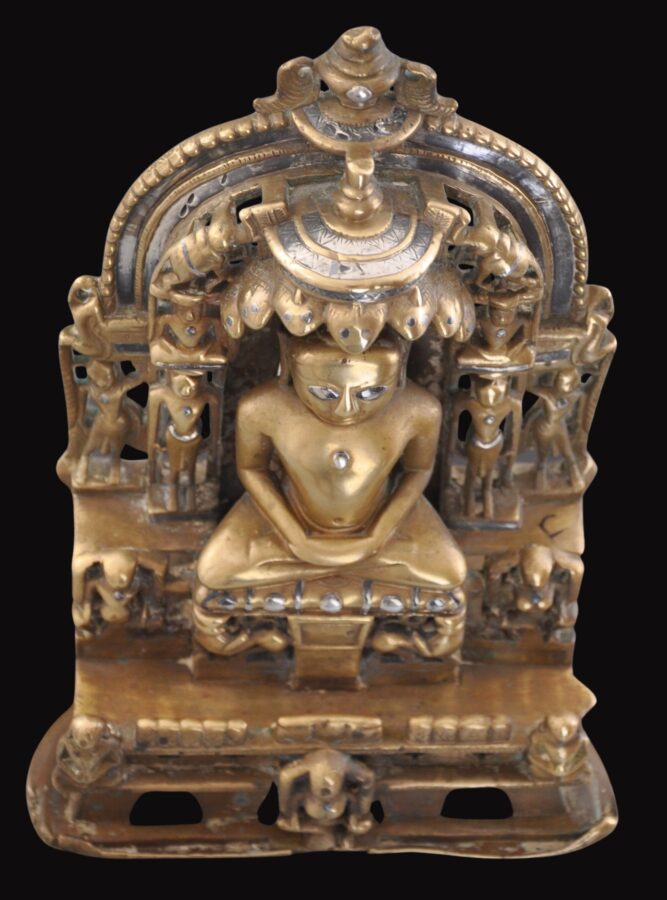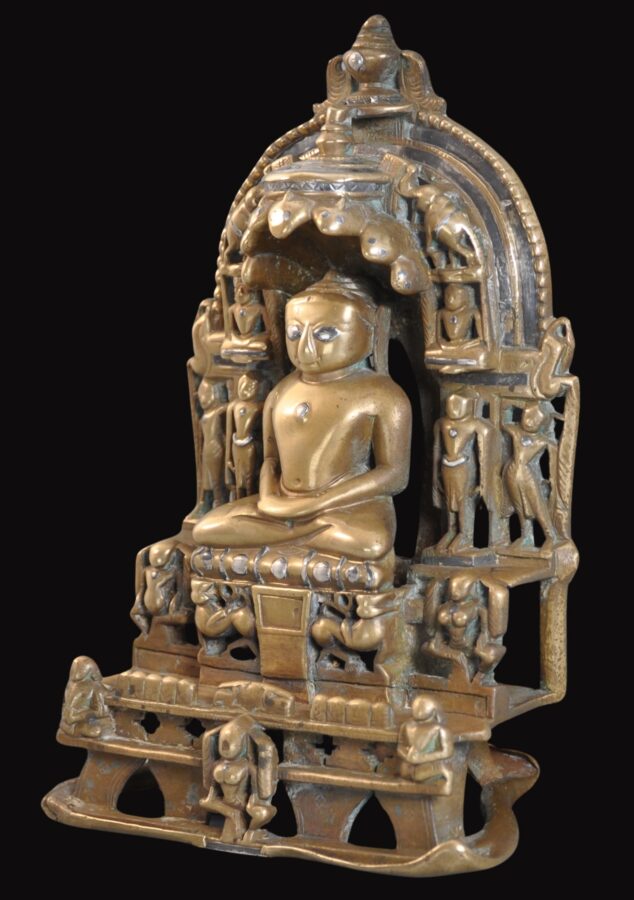Enquiry about object: 9527
Jain Brass Shrine of Parshvanatha inlaid with Silver
Jain community, Western India circa 15th century
height: 16.3cm, width:11.7cm, depth: 6.7cm, weight: 1,003g
Provenance
UK art market
This Jain shrine is of brass and inlaid copiously with silver to a degree that is unusual. The central figure is of Parshvanatha, the twenty-third Tirthankara. He is shown in a broad, rounded manner, beneath a cobra with seven heads, which is an identifying feature of Parshvanatha
Seated on either side of the throne are small figures of Parshvanatha’s yaksha Dharanendra and yakshi Padmavati. Standing on each side of the central figure are two more Jinas plus two attendants, and above them are seated Jinas. Together with the pair of standing Jinas and the two sitting Jinas, the central figure forms a ‘five-Jina image’ or a pancatirthi.
Parshvanatha is shown with a large, wide head, elongated ears and broad shoulders, and is seated cross-legged on a cushion on a simhansaor or lion throne, beneath a parasol that is being lustrated on either side by elephants. The lustration of the parasol implies the lustration of the Jina. The protective hood of a naga or seven cobra heads emerges like a fringe from beneath the parasol. According to Guy (2007, p. 12) the device of using a protective naga to shelter a deity is an early iconographic form that merges anthropomorphised deities with animistic nature spirits.
The nine planets are depicted as roundels in a group or five and then a group of four before the throne.
The arched backing plate is topped with a sacred vase (kalasha) finial.
As is usual of Jain images of this period, the figures are arranged in a geometric configuration. The stylised convention of the array gives the altarpiece an almost abstract composition.
Jinas are depicted in only two poses: kayostarga (standing) or dhyani (seated in meditation). Their lack of clothing symbolises their asceticism and their belief in non-possession. Jain monks however fall into two sects and either are naked (they are the Digambaras – ‘clothed by the sky’) or they wear limited white cloth to cover their nakedness (the Svetambaras – ‘clothed in white’).
The figures portrayed are shown partly clothed which suggests that the donor of this shrine belonged to the Svetambara strand of Jainism.
The eminence of the Parshvanatha is suggested by the figure’s relative large size and its augmentation with silver inlay, including the srivatsa symbol on his chest, plus the unusual amount of silver inlay around the figure. There is silver inlay for the srivatsa symbols on each of the minor Jina’s chests; plus either with waist bands or the cushions on which they sit; the very front of the overall shrine is inlaid with a small strip of silver; Parshvanatha’s cushion is inlaid alternatively with silver strips and roundels; the various yakshis and attendants have silver srivatsa symbols, the platforms on which the secondary Jinas stand are inlaid with silver; the eyes of the seven cobra heads are inlaid with silver; the parasol is inlaid with two bands of engraved silver, the kalasha finial is inlaid with silver; and the main arch is inlaid with two bands of silver.
Jina images are intended to represent the enlightened and liberated soul in its perfect equanimity.
There is an extensive inscription on the reverse in Devanagari script.
The image shows ritual wear from puja handling and lustration.
References
van Alphen, J., Steps to Liberation: 2,500 Years of Jain Art and Religion, Ethnographic Museum Antwerp, 2000.
Guy, J., Indian Temple Sculpture, V&A Publications, 2007.
Pal, P., Indian Sculpture, Volume 2 – 700-1800, Los Angeles County Museum of Art, 1988.
Pal, P., The Peaceful Liberators: Jain Art from India, Thames & Hudson/Los Angeles County Museum of Art, 1995.
Pal, P. (ed.), Puja and Piety: Hindu, Jain, and Buddhist Art from the Indian Subcontinent, Santa Barbara Museum of Art/University of California Press, 2016.


